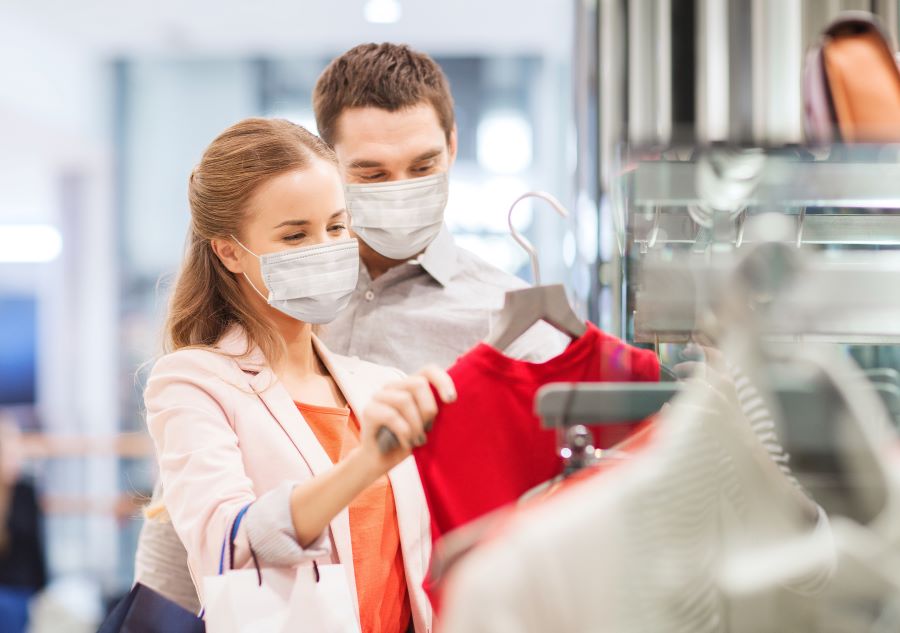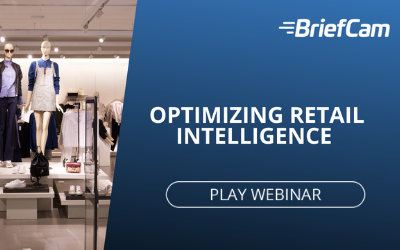How Shopping Malls Can Re-Open and Comply with Evolving Health & Safety Policies

Evolving in step with health and safety mandates
The COVID-19 pandemic has created unprecedented health and economic problems across the globe. To help prevent the spread of the disease many local and state governments have issued social distancing and/or stay at home orders, forcing many businesses to temporarily close for months at a time. Malls, retail stores, and restaurants have been hit hard by this pandemic – even those that were able to conduct business via curbside pickup or takeout orders.
As lockdown restrictions are gradually relaxed, many businesses can resume business only if they and their customers comply with new health and safety mandates, including physical distancing and mask wearing, as well as the ability to conduct contact tracing for cases when infections could not be proactively prevented. Furthermore, to attract consumers and retain employees, shopping centers need to reassure their visitors, customers, and employees that it is safe to work or shop there. Property managers must take steps to ensure a clean, safe environment with a low risk of COVID infection. Achieving all of this and fulfilling all of the mandates may seem like a daunting challenge, but it is possible with the help of video content analytics (VCA) technology.
Many shopping centers already have video surveillance camera networks, but manually monitoring each camera feed isn’t realistic for security and surveillance operators, whether it’s being used for proactive, real-time response for preventing violations or post-violation investigations to reactively understand what has already occurred. Video content analytics software overcomes this challenge by making video searchable, actionable, and quantifiable. Powered by deep learning and artificial intelligence, the technology extracts, identifies, classifies and indexes valuable video metadata, so that video can be seamlessly reviewed, acted upon in real time, and analyzed for behavioral trends, making it a key enabler for re-opening businesses that have been completely or partially shuttered because of COVID 19.
Occupancy Management & Crowd Control
Since the onset of the COVID pandemic, crowds have become problematic. Fortunately, video content analysis systems can be leveraged to benchmark normal traffic patterns and identify anomalies as well as count objects (such as vehicles) or people in an area (store aisle, parking lot, or other space). By visualizing historic video data to understand occupancy norms and pinpoint where bottlenecks form, video analytics operators can configure rule-based alerts to notify them when pre-defined safe occupancy thresholds have been exceeded.
Real-time alerts enable operations or security managers to assess situations and swiftly respond. For example, if a long queue is forming in a checkout area, additional clerks can be assigned to alleviate that congestion, or staff can be deployed to remind customers to distance themselves six feet apart or to redirect traffic to other checkout areas. This, of course, can be useful for optimizing the visitor experience, even in times when social distancing is not required: Video analytics further enables retailers and shopping center managers to map common customer paths, object interactions and dwell durations to optimize traffic flows throughout a mall or shop, track crowd demographics, size and movement patterns, and design more effective floor plans or parking lots to offer a streamlined and satisfactory customer experience.
Another way that shopping center property managers can reduce crowding in their facilities and demonstrate compliance with physical distancing mandates is by people counting analytics to track occupancy based on people entering and exiting a premises across multiple cameras. By triggering alerts for occupancy violations, entry to the building can be limited to approved numbers. Intelligent video surveillance also empowers operators to gather long-term trend data regarding where and when customers typically enter the center, so property managers can better plan to allocate security or customer service resources.
Optimizing facility maintenance and sanitization
Property managers now have more pressure to maintain clean public restrooms, food courts, and other common areas. With people counting analytics, operations managers can base sanitation and maintenance efforts on actual usage of the facilities: Cleaning crews can be deployed using real-time line-crossing and people counting alerts that indicate entries into certain rooms, hallways, or other highly trafficked areas. By setting thresholds for pedestrian traffic, operators trigger alerts to indicate when maintenance should clean an area, such as a restroom.

In addition to people counting alerts to for driving response, video analytics software can generate dashboard reports of trends over time and across multiple locations, to give managers visibility into high trafficked areas, where maintenance resources are most needed. Heatmaps can show common pathways where people walk and how many times people go into specific areas such as a restroom or food court. Based on these movement trends and patterns, operations managers can predictively hire cleaning and maintenance staff.
Enforcing physical distancing and face mask wearing
In addition to traffic trends, video analytics can also be used for identifying the distance between individuals for validating compliance with physical and social distancing mandates. With video content analytics, operators can detect, monitor, and analyze proximity between people, a capability that allows shopping centers to track whether their customers and employees are observing physical distance mandates and alert to crowding as it forms. Custom rules can be set up to trigger alerts when safe or comfortable distances between individuals are violated, so that security or customer service managers can respond, as needed. Property and operations managers can also trend data over time to demonstrate compliance with physically distancing, identify violation hotspots or even just highlight inefficient traffic flows. In this way, they might uncover where and why crowding is occurring and make intelligent decisions to prevent future problems. For instance, by identifying the times of day or week when physical distancing was most violated, the shopping center could develop prevention strategies and contingency plans.
Another important metric that video content analysis can detect is mask wearing. While, a human monitor could not effectively monitor feeds to identify individuals violating mask wearing mandates in a shopping center, a video content analytics system can detect and alert on whether or not a person is wearing a mask. Over time, this data can be aggregated to demonstrate trends and direct security and enforcement areas to problem hotspots within the shopping center, whereas real-time alerts can trigger immediate response to violations, as necessary. Tracking these metrics may also help determine where to deploy staff, post signage, or place kiosks to distribute free masks. In this way, operations managers can assess whether a significant percentage of people are wearing masks to make it reasonably safe for both customers and employees and demonstrate compliance to authorities in order to remain open.
Efficient contact tracing
Video content analytics offers many measures for proactive prevention of COVID 19 spread, but it is also a key tool for driving reactive contact tracing when virus cases are confirmed. For instance, if a mall employee were to self-identify to his/her employer that he/she has tested positive for COVID-19, video analytics can be leveraged to conduct a forensic video review to pinpoint the infected person throughout video and identify his/her interactions with other people, who may now be at risk. If provided with a digital photo of the individual, the employer can upload that image to the video analytics system and use facial recognition or appearance similarity filtering to search across footage from multiple days and cameras to track the person’s movements and see with whom and with what he/she came into contact. Along with proximity identification filters to track the distances between the person and others and the duration of time spent in close proximity to others, the video analysis solution can enable the employer to generate a list of at risk individuals and notify them of the situation.
Malls and shopping centers must adapt to this “new normal,” to ensure workplace health and safety, and attract customers to return to the stores. By encouraging safe behaviors, maintaining clean facilities, and demonstrating their ability to effectively keep employees and visitors healthy and safe, shopping centers can improve the customer experience, acquire new customers, and retain them. Since most malls already have video surveillance systems, they can maximize these existing investments with video content analytics software that will provide value during the pandemic and beyond.
Signup to receive a monthly blog digest.